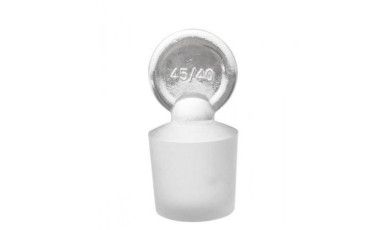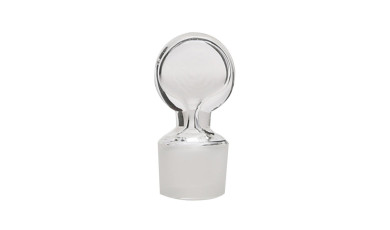Stoppers
Professional Sealing Solutions for Flask and Tube Closure
Laboratory stoppers keep your samples secure and prevent contamination across every stage of research. Whether you're storing reagents in beakers or sealing test tubes for long-term storage, the right stopper material makes the difference between reliable data and compromised results.
Available in rubber, cork, glass, silicone, polyethylene, and PTFE variants, each material serves specific laboratory demands. Rubber stoppers dominate vacuum applications while glass stoppers excel in high-purity analytical work.
Rubber vs. Cork Stopper Materials
Rubber stoppers (natural and synthetic) provide superior sealing force and flexibility. They work exceptionally well with distillation apparatus and vacuum systems where air-tight seals prevent pressure loss. Synthetic rubber resists more chemicals than natural rubber.
Cork stoppers suit ambient temperature storage and general lab use. They're cost-effective for teaching labs and routine sample storage but lack the chemical resistance needed for aggressive solvents. Cork breathes slightly, making it unsuitable for volatile compounds.
Silicone and PTFE stoppers handle extreme conditions. PTFE offers near-universal chemical resistance and works from -200°C to 260°C. Silicone bridges the gap between rubber flexibility and enhanced temperature tolerance up to 200°C.
Size Compatibility and Fit Standards
- Numbered sizing: Standard stoppers range from #00 (smallest) to #15 (largest) for tapered fits
- Standard taper joints: Glass stoppers use 10/19, 14/20, 19/22, 24/40, and 45/50 designations
- Solid vs. hollow: Solid stoppers seal completely while hollow versions accommodate thermometers or tubing
- One-hole and two-hole: Drilled stoppers enable gas flow or sampling without breaking the seal
Match stopper sizes to your glassware carefully. High laboratory glasses and volumetric flasks require precise tapers for accurate measurements.
Chemical Resistance and Temperature Tolerance
Rubber stoppers resist dilute acids and bases but swell in organic solvents like acetone and chloroform. Always check compatibility charts before use with aggressive chemicals.
Glass stoppers provide complete inertness but risk freezing in ground glass joints with alkaline solutions. Apply a thin layer of stopcock grease to prevent sticking.
PTFE stoppers cost more but handle nearly every chemical at temperatures up to 260°C. They're mandatory for hydrofluoric acid work and strong oxidizers.
Store stoppers properly when not in use. Keep rubber stoppers away from ozone and UV light to prevent degradation. When working with hazardous materials, always wear appropriate Personal Protective Equipment & Safety Gear. Check our Special offers for bulk stopper purchases that reduce per-unit costs for high-volume labs.
Our partners
We only work with trusted brands
Sign up to our newsletter to get the latest news and updates about our products.








